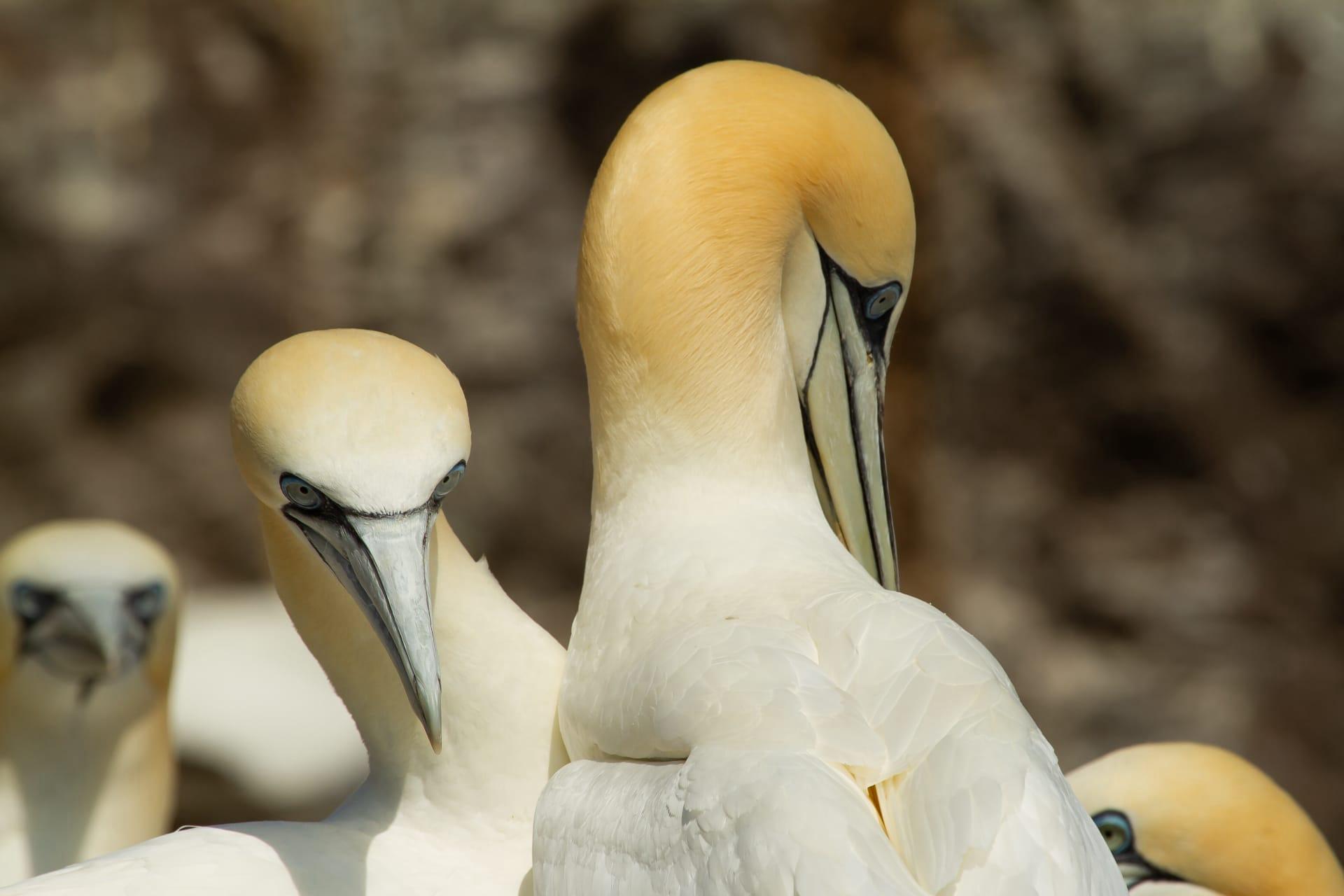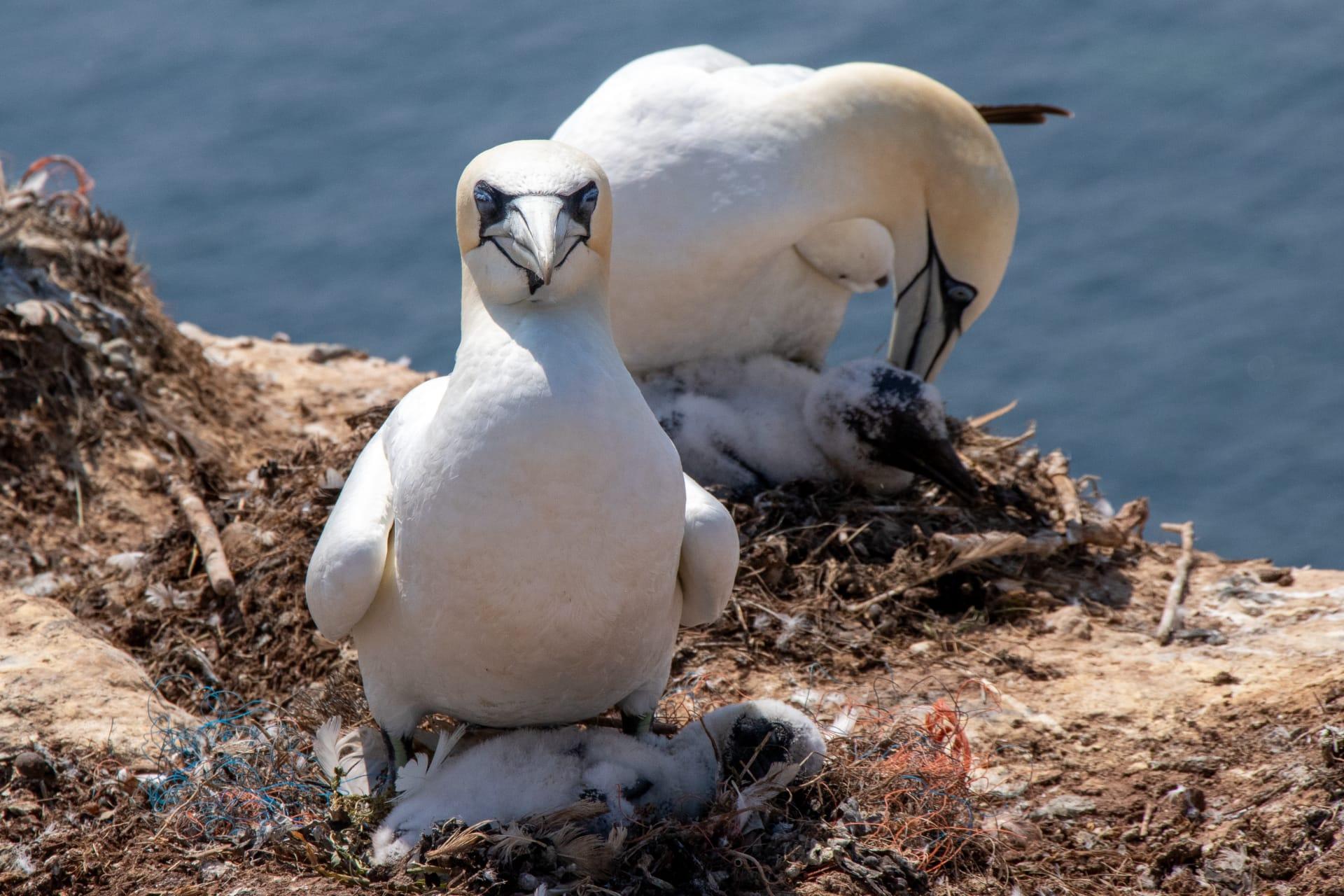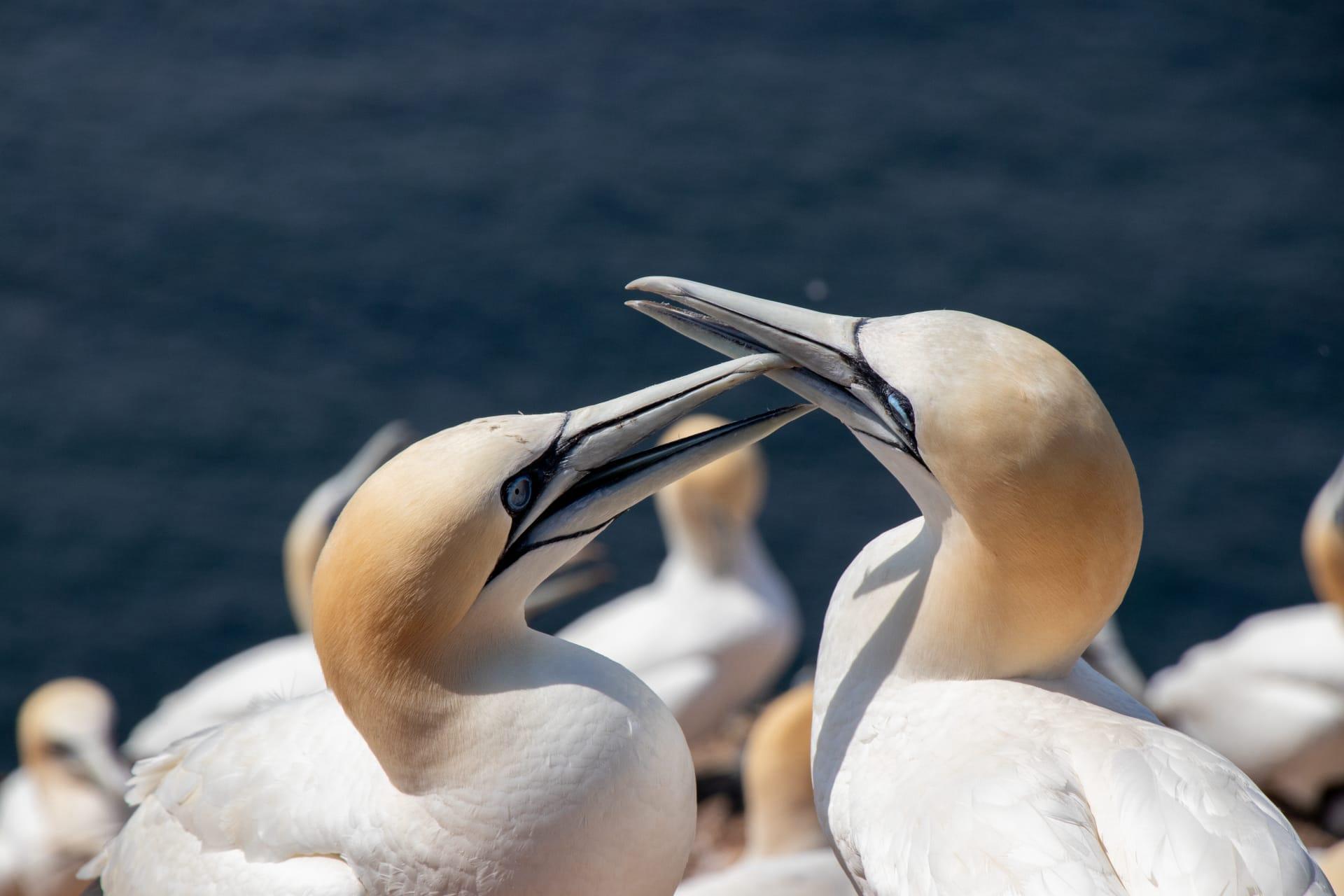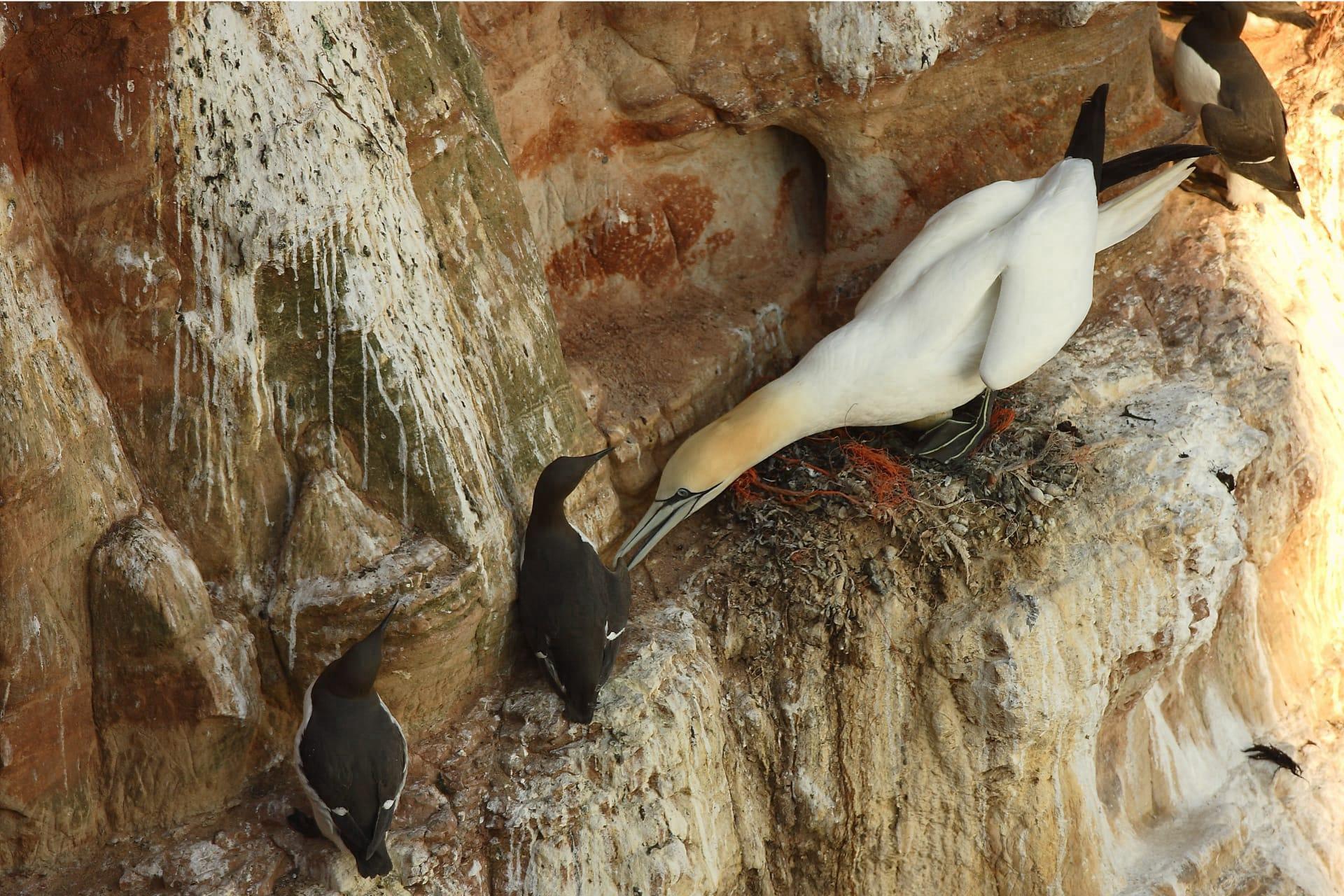Gannet
- Home /
- Mini Encyclopedia /
- Animal /
- Gannet
1
Gannets, scientifically classified under the genus Morus within the family Sulidae, are a captivating species of seabirds. This genus comprises three distinct species: the Northern Gannet (Morus bassanus), the Cape Gannet (Morus capensis), and the Australasian Gannet (Morus serrator). Each species exhibits unique features, yet they share common traits like their streamlined bodies and long, pointed wings, which are essential for their impressive diving abilities.
Gannets are predominantly found in the temperate seas of the North Atlantic, with the Northern Gannet inhabiting regions from the eastern coast of North America to the western coasts of Europe and North Africa. The Cape Gannet is primarily located around the southern African coast, particularly in Namibia and South Africa. The Australasian Gannet, on the other hand, is distributed across the coasts of New Zealand, Australia, and Tasmania. These birds prefer nesting on cliffs and small islands, away from predators and human disturbances. Their colonies are often vast, with thousands of individuals, creating a bustling and noisy environment.

2
Question: Do gannets plunge into the water from great heights only to catch fish?
Answer: While it's true that gannets are renowned for their spectacular high-speed dives, it's a common misconception that they dive only to catch fish. In reality, these dives are part of their complex hunting strategy. Gannets can dive from heights up to 100 feet, reaching speeds of 60 miles per hour as they hit the water. Their eyes are specially adapted to spot fish from great heights, and they have air sacs in their face and chest to cushion the impact. Once submerged, they use their powerful wings and streamlined bodies to pursue fish underwater, sometimes reaching depths of over 20 feet.

3
Gannets have evolved several unique strategies to thrive in their marine environment. One of the most striking is their ability to dive from great heights, penetrating deep into the ocean to catch prey. This technique not only demonstrates their physical prowess but also their acute vision, which allows them to spot fish from high above the water. Additionally, gannets have specialized glands located near their eyes, which help desalinate seawater, an essential adaptation for a life spent predominantly at sea.
Another key survival strategy for gannets is their social nesting behavior. They form large, dense colonies on cliff faces and islands, which offers protection from predators. Within these colonies, gannets are known for their elaborate courtship rituals, including mutual preening and synchronized movements. This social structure is vital for the survival of their young, providing a communal defense against threats and a shared knowledge base for efficient foraging and hunting techniques.

4
In the ecosystem, gannets play a crucial role as apex predators in the marine food chain. By feeding primarily on fish and squid, they help maintain the balance of marine life. Their predatory behavior can influence the population dynamics of their prey, which in turn affects the entire aquatic ecosystem. Gannets, therefore, are important indicators of the health of marine environments, as changes in their behavior or population numbers can signal shifts in oceanic conditions.
Gannets also contribute to nutrient cycling in their habitats. The large colonies produce significant amounts of guano, which is a rich fertilizer. This guano influences the nutrient composition of the soil on islands and coastal regions where they nest. It can lead to increased plant growth and, consequently, impacts the terrestrial ecosystems connected to these areas. Moreover, their feathers and other organic matter from their nests contribute to the nutrient pool, further integrating marine and terrestrial ecosystems.

5
Film: "The Gannets' Gauntlet" is a recent documentary produced in the United Kingdom, released in 2022. This visually stunning film explores the life of Northern Gannets in the rugged landscapes of Scotland. The documentary highlights their remarkable diving abilities, intricate social behaviors, and the challenges they face due to changing oceanic conditions and human activities.
Book: "Wings of the Sea: The Life of Gannets," authored by British ornithologist David Attenborough and published in the UK in 2020, delves into the fascinating world of gannets. Attenborough's vivid descriptions and scientific insights provide a comprehensive view of these birds, from their hunting techniques to their breeding rituals, set against the backdrop of the ocean's wonders.
Book: Another notable work is "Gannets: The Nature's Dive Bombers" by Canadian biologist Susan Harper, published in 2021. Harper's book focuses on the ecological aspects of gannets, discussing their role in the marine ecosystem, their adaptation strategies, and the conservation challenges they face. The book is praised for blending scientific research with engaging narratives, making it accessible to a wide audience.